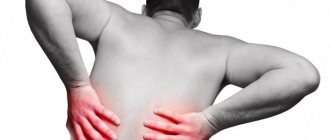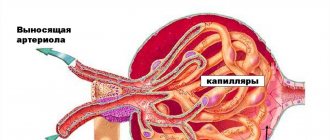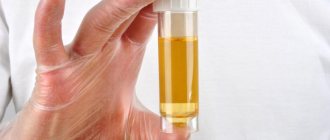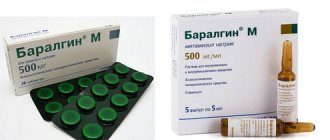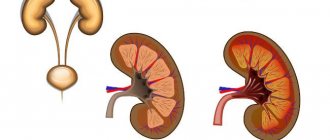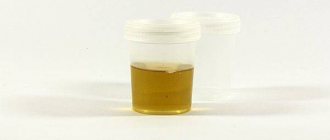You can often hear about such unpleasant sensations as a burning sensation in the kidney area. Both adults and children can experience these symptoms. However, they are dangerous and cannot be ignored.
The burning sensation occurs due to a certain irritant that is activated on the mucous membrane of the kidneys and ureter. This is precisely what suggests that some abnormalities occur in the kidneys in the human body. One of the reasons may be the presence of stones in this organ . However, it is dangerous to judge and diagnose yourself, so if a burning sensation occurs, you should consult a doctor.
Burning pain in the kidney: main causes and symptoms
The inflammatory process in the paired organ is also accompanied by burning and painful sensations in the lower back. Such complications that cause similar symptoms include pyelonephritis, glomerulonephritis, during which inflammation of the renal pelvis occurs. The provoking factor is a bacterial infection that affects one or both kidneys. The development of pathology is accompanied by many unpleasant signs, including increased body temperature, a painful sensation in the head, lethargy, and in advanced cases, puffiness of the face appears due to poor fluid removal.
Urolithiasis is becoming more and more common in children, and in adults the percentage of development is extremely high. Stone accumulations form in the kidneys during dysfunction of metabolic processes, as well as during the inflammatory process; the formation of stones is possible due to acid imbalance. During the passage of stone stones, the mucous membrane is injured, the damage becomes inflamed, which causes an unpleasant sensation. In addition to the burning sensation, a person feels sharp pain signals that remain for some time after the stone leaves the tract.
A burning sensation in the paired organs of the genitourinary system is a sign of serious pathological processes.
Malignant formations in paired organs often cause burning pain in the lower back. However, tumor damage to neighboring organs also provokes such symptoms, and uncharacteristic formations affecting the human abdominal cavity can provoke characteristic symptoms. Therefore, it is important not to delay your visit to the doctor in order to timely identify the factors that provoke discomfort.
Possible diseases with burning in the hypochondrium area
Discomfort can be caused by a variety of diseases, both relatively safe and unsafe. The burning sensation is caused by dysfunction of the digestive organs, cardiac, pulmonary pathologies and inflammation of the appendix. In most cases, fever in this area is caused by problems with the functioning of the liver.
The human body is a complex mechanism. Painful feelings that arise in a certain area are not constantly interconnected with the organ located in it. A burning sensation can be caused by various pathologies, ranging from abdominal heart attack to appendicitis.
An unpleasant feeling of heaviness in the right side indicates the presence of subsequent ailments:
- discrepancies with the organs of the digestive system;
- pathological processes in the lower part of the right lung;
- inflammation of appendicitis.
- heart diseases.
Virtually all systems located in the abdominal cavity are possible sources of pain. A burning sensation can also appear with intercostal neuralgia or excess salt formation in the lumbar region.
Liver and gallbladder
Important functions of the liver are neutralizing the effects of toxic substances, purifying the blood of harmful impurities and creating bile necessary for the breakdown of fats in the intestinal tract. Taking into account the overload that this organ experiences due to its own multitasking, it is often attacked by various diseases.
The gallbladder is a small muscular sac that stores bile. The organ is located directly under the liver. Through the bile duct it transports secretory fluid to the duodenum, where it plays a role in the digestive process.
Hepatic and biliary pathologies often appear against the background of subsequent actions:
- eating fried, fatty and salty foods;
- alcohol abuse;
- the presence of inflammatory actions of the digestive system ( many elements that are in relationships and connections with each other, which forms a certain integrity, unity
); - worm infestation.
Constant stress can also provoke disruptions in the functioning of these organs.
Table 1. Liver and gallbladder diseases
| Disease | Description |
| Impaired flow of bile. | Dyskinesia, characterized by suppressed motility, leads to stagnation of bile. The patient experiences prolonged pain and burning in the right side. The pain may radiate to the anterior part of the peritoneum and spread to the lumbar region. Deterioration of the condition is observed with excess nervous or physical stress. From time to time ( a form of physical and mental processes, a condition for the possibility of change ), symptoms intensify after taking spicy or fatty foods and a number of honey products. The danger of this disease lies in the crystallization of the secretory substance, leading to the formation of stones. |
| Gallstone disease. | When stones form in the ducts, acute colic, caused by a slowdown in the release of secretions, is added to the burning sensation. |
| Cholecystitis. | In most situations, inflammation of the walls of the gallbladder occurs against a background of increased acidity, stimulating heartburn and frequent attacks of nausea. This pathology has a bad effect on the general physical condition and contributes to a decrease in working capacity. If pain in the right shoulder blade or shoulders is added to the burning sensation, the disease has progressed to an acute form. |
| Hepatitis and cirrhosis. | In the presence of these diseases, conspicuously expressed painful feelings are not constantly observed. But with an acute form ( may mean: The shape of an object is the relative position of the boundaries (contours) of an object, an object, as well as the relative position of points on a line ) of the pathology, a powerful burning sensation occurs in the right hypochondrium. The destruction of liver tissue is often painless, sometimes revealing itself through yellowing of the skin. |
Often liver diseases, especially cirrhosis, lead to a fatal outcome. Pathologies of the gallbladder in the final stages of development are treated using surgical intervention. Therefore, it is so important to identify the disease at an early stage and take the necessary measures in time.
Pancreas and intestinal tract
The pancreas is a large gland that performs 2 important functions in the body. It produces pancreatic juice, which contains a huge amount of enzymes necessary for the digestive process. In addition, it creates insulin and glucagon, which regulate metabolic processes.
The intestinal tract is the largest organ of the gastrointestinal tract and belongs to two systems at once - the digestive and the immune. It is a protective barrier that prevents attacks by pathogenic microbes, and processes fats and carbohydrates found in the food bolus.
Pain and burning sensations in the right side of the peritoneum may indicate subsequent illnesses.
Table 2. Diseases of the pancreas and intestinal tract
| Disease | Description |
| Pancreatitis. | An inflammatory process affecting the pancreas. Pathology occurs due to a violation of the outflow of digestive juice. Having settled inside the gland, the enzymes in the water begin to digest the surrounding tissue. In the acute form of the pathology, adjacent organs and blood vessels are destroyed. In especially languid variants, a necrotic process begins, leading to a fatal ending. |
| Duodenal ulcer. | The deficiency of the walls of this part of the intestinal tract occurs due to the action ( act of activity, an ambiguous word that can mean: Action of a group (in mathematics) Action (physics) Actions (acts) - the parts into which the drama is divided ) of acid on the mucous membrane. Unlike erosions, an ulcer leaves a scar after healing. The pathology is accompanied by a feeling of heat after eating and a corresponding burning sensation in the right side. |
If the pain decreases, you should check the condition of the appendix.
Kidneys
The main task of the kidneys is to remove metabolic waste products from the body. Despite the localization of this organ in the lumbar area, from time to time you can feel the inflammatory processes occurring in it in the hypochondrium area.
If the burning sensation is accompanied by renal colic, accompanied by an increase in temperature and a change in the color of urine (in a healthy body, urine should be straw-colored), doctors diagnose kidney disease.
Table 3. More common kidney pathologies
| Disease | Description |
| Urolithiasis. | The formation of stones in the urinary tract, which are formed against the background of: • diseases ( this is a condition of the body, expressed in disruption of its normal functioning, life expectancy and its ability to maintain its homeostasis ) of the thyroid gland, • abnormalities of the genitourinary system; • metabolic disorders. In people with a sedentary lifestyle, they occur due to stagnation of urine in the kidneys. In the presence of huge stones, aching pain is noted in the lumbar area, radiating to the hypochondrium. Small stones contribute to the appearance of acute, sharp pain, radiating to the side. In addition, a burning sensation, vomiting and increased blood pressure are noted. |
| Pyelonephritis | Possible aggravation of urolithiasis, stimulating inflammation of the kidney. It also occurs as a result of an attack by harmful microbes. It often occurs without noticeably expressed symptoms. The burning sensation in the hypochondrium may be weak and virtually unnoticeable. |
As a rule, kidney diseases manifest themselves through back pain, only occasionally radiating to the hypochondrium area.
Lungs
The lungs are responsible for enriching the blood with oxygen and removing carbon dioxide. Symptoms of pulmonary pathologies are occasionally accompanied by burning feelings ( confuse with: SensationFeeling is a human emotional process, reflecting a subjective evaluative attitude towards real or abstract objects
) in the right hypochondrium. But with the development of a number of diseases, pleurisy, for example, the fluid accumulated in this paired organ can put pressure on the peritoneum. This will contribute to the appearance of a burning sensation.
Pleurisy is an inflammatory lesion of the serous membrane that envelops the lungs. This disease is characterized by acute chest pain, chills, lethargy, persistent shortness of breath, cough and fever.
Inflammation of the pleura is always secondary, it is a consequence of aggravation of a number of diseases. But at the stage of exacerbation it moves to the forefront, masking the underlying disease.
Other prerequisites
The burning sensation can also be caused by other diseases that, at first glance, are not related to this area.
Similar discomfort occurs in the presence of subsequent pathologies ( “” (from the Greek
):
- angina pectoris;
- intercostal neuralgia;
- neoplasms in the diaphragm area;
- giardiasis;
- shingles;
- heart attack;
- osteochondrosis.
Carrying a baby to term can also cause discomfort. This is due to the pressure that the fetus puts on the gallbladder.
In a sedentary lifestyle, active physical overload can speed up blood circulation and provoke the release of adrenaline in the area of the right hypochondrium. As a result, a short-term heat is felt in this area. Sharp tilts of the body lead to compression of the tissue by the ribs, which causes severe discomfort. During menstrual periods, estrogen is released, stimulating the appearance of a burning sensation in the right side of the tummy. This is due to spasm of the bile ducts, leading to unpleasant consequences.
Diagnosis
At the first signs of discomfort and burning, you should immediately consult a doctor. Successful treatment also depends on early diagnosis of the pathology. Tests include a complete blood and urine test (checking the level of white blood cells and red blood cells), an ultrasound examination and x-rays to check the patient for the presence of stones or other formations. It is important not to wait until the pain becomes unbearable, but at the first sign of any discomfort or burning in the lower back, immediately contact a specialist to prevent complications and expensive therapy.
Bladder trigonitis
Have you been trying to cure your KIDNEYS for many years?
Head of the Institute of Nephrology: “You will be amazed at how easy it is to heal your kidneys just by taking it every day...
Read more "
Trigonitis, which takes its name from the Latin words trigonum vesicae, translated meaning “vesical triangle,” is also an inflammation of the bladder, only in a specific area. This localization of the infectious focus gives specific symptoms and requires special therapy.
How does it arise
Like cystitis, trigonitis of the bladder is an infectious disease of the urogenital tract, Lieto's triangle. The only difference is that with trigonitis, the bottom region in the form of a triangle is mainly affected, the sides of which are limited by the two mouths of the ureters, the sphincter (internal opening) of the urethra.
The vesical triangle becomes inflamed due to:
- decreased immune defense;
- penetration of infection from an already inflamed posterior ureter;
- hypothermia;
- as a complication of prostatitis.
The development of trigonitis alone is a clinically infrequent case; basically, this disease is additional to existing chronic cystitis or is considered its exacerbation stage.
Causes of the chronic form
The pathogenic causes of the chronic course of the inflammatory process of Lieto's triangle in the vast majority of cases is its circulatory dysfunction caused by:
- bending of the uterus;
- prolapse of the uterus, especially its anterior wall;
- chronic inflammatory processes of the female genital area.
Diagnostics
In addition to collecting anamnesis, questioning the patient about his complaints, as well as clinical signs, in order to obtain a complete diagnostic picture, special studies are prescribed: ultrasound, bacteriological (urinalysis), general laboratory (urine and blood tests) and cytoscopic.
Symptoms
The signs of trigonite are ambiguous. Depending on whether the disease is acute or chronic, the symptoms are expressed with varying intensity.
In the acute stage, the patient experiences symptoms accompanied by severe pain:
- acute urination disorder in the form of difficulty in the outflow of urine from a filled bladder;
- weakness, complaints of increased fatigue;
- false urge to urinate;
- in some cases, the appearance of red blood cells in the urine (it turns from pink to bright red).
Laboratory tests show leukocyturia (increased white blood cell count) and even pyuria.
Chronic trigonitis occurs almost secretly and is manifested only by mild pain reactions during urination (burning, slight pain, etc.), slightly increased frequency of urination.
Treatment
Folk remedies for getting rid of trigonitis are used only in the form of auxiliary treatment measures. The main direction of drug therapy, which is prescribed exclusively by the attending physician, is a long course of antibiotics and immunostimulating medications.
The most optimal way to take antibacterial drugs is not oral, but vaginal (rectal), through the administration of suppositories. In the acute stage, these drugs are supplemented with painkillers, antispasmodics and analgesics. Additionally, those suffering from trigonitis of the bladder are prescribed a special gentle diet.
How long does the treatment course last?
In the absence of complications, trigonitis of the bladder is completely relieved within a period of half to a full month. To get rid of the chronic form, you will need longer treatment with the obligatory condition of eliminating the causes that cause it.
First aid: what can be done?
To relieve attacks of burning and pain in the kidney area, you need:
- Sit in the most comfortable position and perform the coachman pose. You need to sit on a chair, lean forward, hanging your relaxed arms. This position will help relieve muscle tension in the lumbar region.
- Perform the fetal position, with burning pain radiating to the leg.
- Carry out a massage session that will relax the spinal and muscular systems.
To provide the body with a state of rest, for this you need to lie down for a while.
Diagnostics
It is very difficult to determine renal pathology based on its symptoms; this requires serious research. However, having some information, the patient himself can assume the presence of pathology in his body:
- The appearance of renal colic early in the morning after sleep indicates inflammatory processes.
- If pain appears in the area of the paired organ after lifting weights or playing sports, you should think about kidney disease.
- If you experience pain, itching in the area of the right kidney or left kidney, which appears and disappears, renal colic can be assumed.
- In a person suffering from kidney pathology, the skin has a grayish tint.
To identify the cause of the burning sensation, contact a urologist who will prescribe tests. Ultrasound is used to detect inflammation, cysts, and stones. X-ray of the organ to determine the size and location of stones. A laboratory test of urine is also necessary to determine the presence of salt sediment. Analysis of urine bacteriology gives a real picture of the presence of the causative agent of kidney disease.
Diagnosis and treatment
Most often, when there is a burning sensation in the kidneys, the doctor sends the person to diagnose this problem. It is as follows:
Treatment consists of eliminating the symptoms of the disease and reducing the inflammatory process (antibiotics); if there are stones in the kidneys, the doctor prescribes medications that help dissolve and painlessly pass the stones. When the patient has a cyst or a large tumor, surgery is prescribed.
Further therapy depends on the patient’s well-being, the results of surgery and other factors that an experienced specialist pays attention to.
Remember that self-medication or untimely contact with a doctor can cost you your health, and in critical situations, your life!
A burning sensation in the kidneys is a symptom of many kidney diseases. With kidney disease, a burning sensation occurs in the lumbar region of the back; the burning sensation can spread along the urinary tract.
The burning sensation appears due to an irritating effect on the mucous membrane of the kidneys and ureters.
Therapeutic technique based on developmental factors
Having identified the cause that provokes the burning pain, the doctor prescribes a specially selected therapeutic technique. If urolithiasis becomes a development factor, then the use of drugs aimed at neutralizing stone formation and promoting their removal is prescribed. Surgical intervention is performed in the case of a large stone formation.
In the case of an inflammatory process, antibacterial treatment is carried out, acting directly on the pathogen. Cystic formation is treated with a puncture due to its small size. When the formation exceeds the permissible norms, surgical intervention and removal of the cyst are performed. When cancerous tumors develop, treatment is carried out under the supervision of an experienced doctor who prescribes individual therapy based on the diagnosis.
Folk remedies
In the form of auxiliary treatment of kidneys at home, tinctures of medicinal herbs are used for a diuretic disinfectant effect. The following plants are used for these purposes:
- immortelle;
- parsley leaves;
- cornflowers;
- chamomile;
- collection of bearberry;
- caraway;
- calendula.
When treating kidney stones, it is recommended to brew lingonberries, horsetail and bearberry, as well as eat watermelon and tinctures from sunflower root.
ethnoscience
The Arsenal of folk remedies offers many recipes for relieving kidney pain as an addition to the main treatment. The possibility of their use should also be discussed with your doctor. Herbs and berries used for these purposes are usually selected taking into account their high antispasmodic and diuretic qualities. Peppermint, lingonberries, horsetail, birch, wheatgrass, and juniper berries have such properties. For urolithiasis, decoctions of bearberry, black currant leaves, oats, and shepherd's purse are useful. Pharmacies sell a ready-made mixture in the form of kidney tea. To prevent kidney diseases and maintain kidney health, decoctions of black elderberry parsley, cornflower, and knotweed are good.
Decoctions or infusions require long-term use: after 10 days of use, take a week-long break, and then resume for another 2-3 weeks at a lower dosage. When used for more than two weeks, the body usually gets used to a certain herb, which can cause exacerbations of the disease, so doctors advise changing them and temporarily replacing them with herbal preparations for a while (Phytolysin, Canephron). In complex cases of the disease, the use of herbs can be prescribed for life.
- IMPORTANT TO KNOW! Prostatitis is the cause of 75% of male deaths! Don't wait, just add 3 drops to the water..
>>
How to properly prevent the problem?
A properly constructed preventive course will help prevent the development of unpleasant sensations. This course is based on proper nutrition and a healthy lifestyle, namely the exclusion of preservatives, dyes, addictions, carbonated drinks, and strong tea. It is recommended not to ignore a routine medical examination to identify possible pathological abnormalities.
A burning sensation in the lumbar region develops due to many factors that can be mild or serious in nature. Having felt unpleasant symptoms, it is recommended not to delay medical consultation, because the cause of such manifestations can be serious pathologies not only of the kidneys, but also of other organs of the lumbar and abdominal regions.
Prevention
To avoid unpleasant sensations and burning sensations, it is important not to start the disease, but to consult a doctor at the first sign of it. It is also recommended to be wary of infectious diseases and sore throats. It is imperative that if there is swelling, fever or cardiovascular disease, physical activity should be monitored. Another precaution is to keep the lumbar area warm and avoid drafts. A healthy lifestyle should not be neglected, an important element of which is healthy eating and following a simple diet.
Symptoms of the disease
The main complaint of people with pathologies of the spine and internal organs is pain. When it occurs, you need to think about the fact that something may be wrong with the body. The following features of the pain syndrome can help your doctor make a diagnosis:
- the nature of the pain is stabbing, aching, pulling, shooting or burning;
- location of appearance in the chest, under the ribs, at the bottom of the spine or in the side;
- it bothers you in one place or radiates to other parts of the body;
- mild or severe symptoms of pain;
- the symptom becomes stronger during movement, inhalation and sneezing.
Sometimes a person may experience other symptoms, such as itching, dizziness, loss of sensation. Often, it is these signs that help the doctor make the correct conclusion about a developing disease.
Why does burning occur?
The burning sensation is caused for many different reasons:
- Urolithiasis disease.
- Diseases of the urethra.
- Infectious lesion.
- Cyst.
- Malignant tumor growth.
Causes of burning in the kidneys due to urolithiasis
The formation of kidney stones is caused by metabolic disorders. Predisposes to inflammation in the paired organ. The risk of stone enlargement increases due to impaired urine acidity. The outflow of urine is disrupted, which causes stagnation, and the risk of disease increases. The presence of stones is also found in the ureters, causing stagnation of urine, which clogs the lumen of the ureter.
Additional signs are aching pain accompanied by spasms. If the stone moves, it damages the mucous membranes, a burning sensation occurs in the kidneys, and pain is also characteristic. Enlargement of stones causes colic. Paroxysmal renal colic occurs due to hypothermia, sports, and heavy lifting.
Inflammatory processes
Kidney inflammations include:
- Pyelonephritis. Bacterial inflammatory kidney disease. In addition to a strong burning sensation, there is a high temperature, swelling of the face, nausea, dark urine, blood in the urine.
- Glomerulonephritis. Main signs: burning in the kidney area, urine color changes, severe swelling of the face, the amount of urine released decreases, and there is an increase in blood pressure (BP).
What you should know about burning in the body
Best materials of the month
- Why you can't go on a diet on your own
- How to keep vegetables and fruits fresh: simple tricks
- How to curb your sweet cravings: 7 unexpected products
- Scientists say youth can be extended
A person who regularly experiences this unpleasant feeling should consult a neurologist and surgeon. Burning sensations are common when someone suffers from a spinal nerve root disease called radiculopathy. If so, the burning sensation is often accompanied by tingling or numbness in the limbs and a literal pain in the butt.
There is also one of the most unpleasant diseases that provokes a burning sensation. Herpes, a sexually transmitted infection, is known to cause a similar phenomenon. Herpes simplex is often accompanied by pain or lumps in the genital area, swollen lymph nodes and a burning sensation in the skin. Herpes zoster causes burning pain in the abdomen, hearing loss in one ear, headaches and the inability to move the eyes. Both types of infection can produce open lesions and ulcers.
Peripheral vascular disease is another cause of the burning sensation. In this case, the blood vessels narrow and blood flow is limited. This vascular condition usually affects the legs, but can also be felt in the arms. In this case, the burning sensation may be accompanied by increased blood pressure, swollen legs, blue lips and thick nails.
Other conditions that can cause burning include: snake and sea animal bites; leprosy; vitamin, calcium or hormone deficiencies; frostbite; ulcers; carpal tunnel syndrome; other conditions marked by nerve damage.
A burning sensation in the body in many cases is a sign of stress. When the burning skin symptom is caused by dangerous behavior and accompanying changes in the nervous system, calming oneself will cause the stress response to stop and change. As your body recovers from an active stress response, this feeling should subside. Keep in mind that this may take up to 20 minutes or more to allow the body to recover from a severe stress response.
When burning syndrome is caused by constant increased stress, such as too frequent and dramatic events, it may take much longer for the body to recover.
However, once the body has fully recovered from the active stress response and stress response, the burning symptom will completely disappear (it should not be a cause for concern). You can speed up the recovery process by reducing stress, relaxing your breathing, and increasing your rest. In any of these cases, the help of a specialist is necessary in order to establish the exact cause of this symptom. We should not forget that such an unpleasant sensation in the body, skin, and limbs can be the beginning of a serious illness or even a stroke. In a situation where a person has experienced stress and experienced a sharp burning sensation in the body, it is necessary to urgently consult with your doctor.
Causes of kidney pain
As mentioned above, the reasons may be different, but the main ones can be noted, which are accompanied by a burning sensation in the renal region. Causes:
- Kidney inflammation (pyelonephritis)
- Urolithiasis disease.
- Cysts.
- Oncological reasons.
Let's look at each of the reasons in order.
Inflammatory processes
Bacteria are the most common culprits in inflammatory processes. Once they enter the human body, they infect one organ or several at once. So, the patient is often diagnosed with pyelonephritis or glomerulonephritis.
Pyelonephritis is an acute or chronic inflammation of paired organs. Bacteria affect the parenchyma of the kidneys, pelvis, and calyces. Pain and burning may occur in one or both kidneys, depending on how far the bacterial infection has spread throughout the sick person's body.
Inflammatory processes may be accompanied by fever, headache, body fragility, chills and weakness.
If a person experiences regular pain on the left or right side of the lower back, he needs to see a nephrologist. If you miss the opportunity to cure pyelonephritis, this can lead to:
- Abscesses.
- Kidney failure.
- Bacterial shock.
- Sepsis.
In order to determine that a patient has bacterial inflammation of the kidneys, it is necessary to give urine for analysis and take blood for laboratory testing.
Glomerulonephritis affects the glomeruli of the kidneys. Such an infection leaves antigen-antibodies in the capillaries of the glomeruli, which in turn cause a delay in the process of urine production, impair blood circulation, and subsequently retain water and salt in the patient’s body. If you do not respond to alarms, this will lead to kidney failure.
Women need to pay attention more often to any symptoms of pain in the kidney area. Because the female body, including the urinary system, has its own structure, which, unfortunately, is very easy for bacteria to enter the body. Therefore, the fair sex often suffers from inflammatory processes in paired organs.
If the patient does not have acute or chronic inflammation of the kidneys, then you can try to eliminate the inflammatory process with folk remedies. Decoctions of blue cornflower, horsetail, and bearberry leaves will help with this. It is necessary to pour boiling water over the herb and let it brew well. You need to drink the decoction before meals for at least two weeks, 2.3 times a day.
But, when a person suffers from an acute infectious disease, one should consult a doctor who will prescribe high-quality treatment with medications and, possibly, a certain diet. Remember that self-medication can only worsen the condition!
Stones in the kidneys
The most common disease is urolithiasis. During such an inflammatory process, the patient experiences not only a burning sensation, but also severe pain in the area of the paired organs. Unfortunately, at the moment even children are faced with such a difficult illness.
Stones in paired organs can occur due to:
- Bad water.
- Monotonous food (lack of vitamin A and D)
- Climatic conditions (hot climate)
- Features of the structure of the ureter.
- Heredity.
Such stones appear as a result of metabolic disorders in the body . This entails stagnation of urine, and this is what causes the stone (blockage). Stones form in the kidneys or ureter. Due to the fact that they have sharp corners and a rough surface, they injure the mucous membrane, which causes a burning sensation.
When the stone begins to leave the body, it is accompanied by burning and pain symptoms. A person may experience pain while urinating and may also experience blood in the urine.
Treatment of the syndrome
After the diagnosis is established, the patient is prescribed conservative therapy:
- Urolithiasis is accompanied by severe pain. To relieve unpleasant symptoms, antispasmodics are used: No-shpa, Drotaverine.
- It is also necessary to correctly prescribe a medicine that has the ability to dissolve small stones and remove sand.
It is possible to prescribe surgical treatment methods if the size of the kidney stone exceeds 4 cm. The inflammatory process occurs when bacteria enter the urinary system, causing the disease. One of the factors is often hypothermia. The disease is treated with antibacterial drugs. When treating a cyst, it is necessary to take into account the size of the tumor.
In the presence of small nodes, puncture is used to eliminate the liquid composition. For large cysts, surgical treatment is used.
How to treat burning in the kidneys - methods
After a series of examinations and confirmation of the diagnosis, the patient is prescribed conservative treatment.
- Urolithiasis disease . The first step is to eliminate the pain syndrome with an antispasmodic - no-spa, drotaverine. The main drug prescribed is one that dissolves the formed stone and removes sand. If the stone is larger than 4 cm, surgery may be required.
- Inflammation . As a result of hypothermia, an inflammatory process occurs. It can be cured as prescribed by a doctor using antibacterial agents. The therapy is quite short and effective.
- Cysts . Small nodes need to be treated with the assistance of a puncture, during which the cavity is pierced and the liquid composition is eliminated. In cases of large cysts, surgical intervention is prescribed to remove the tumors.
Causes
In this case, kidney stones form. Stones can occur not only in adult patients; stones are now increasingly being detected in childhood and adolescence.
The cause of kidney stones is a violation of metabolic processes in the body. The presence of inflammatory diseases in the kidneys is a predisposing factor.
Since inflammatory diseases disrupt the acidity of urine, the risk of developing stones increases.
A burning sensation in the lumbar region is one of the most common types of pain syndromes experienced by a person throughout life. In the fairer sex, such discomfort most often has a hormonal nature; in men it is caused by problems with the musculoskeletal system, or diseases of the internal organs.
Everyone, starting from adolescence, knows what kidneys are and their functions, at least in general terms. The paired organ is responsible for processing all the fluid that enters the human body. They promote cleansing, maintain hemostasis and the balance of acids and alkalis. Even the blood will be much better and cleaner thanks to the bean-shaped organ.
A burning sensation in the lumbar region is one of the most common types of pain syndromes experienced by a person throughout life. In the fairer sex, such discomfort most often has a hormonal nature; in men it is caused by problems with the musculoskeletal system, or diseases of the internal organs.
Lower back pain is a problem known to many people, the main symptom of which is a burning sensation in the kidney area. Do not ignore these symptoms under any circumstances, because they may indicate problems with internal organs: from the cardiovascular system to spinal diseases. Most often, the main reason is the deposition of sand and kidney stones due to metabolic disorders in the body.
Before you begin treating pain in the kidney area, you need to know the causes of its occurrence.
Burning in the lower back? The reasons for this phenomenon are disappointing
The lumbar region can be an excellent help in identifying many serious diseases. The presence of pain in different parts of the back indicates ailments in the internal organs. The lower back is no exception.
For many women, pain indicates the approach of menstruation or diseases of the female genital organs. For men – about inflammation of the prostate gland.
If we consider the appearance of a burning sensation in the lower back, the reasons for both sexes are the same - an inflammatory process and the presence of serious troubles with the body. These are the kidneys. But what could be wrong with them? Is there a chance to understand the reasons on my own?
Kidneys
Everyone, starting from adolescence, knows what kidneys are and their functions, at least in general terms. The paired organ is responsible for processing all the fluid that enters the human body. They promote cleansing, maintain hemostasis and the balance of acids and alkalis. Even the blood will be much better and cleaner thanks to the bean-shaped organ.
They are located on both sides of the spine. Quite small in size, but perform vital functions. Of course, if one of them fails, a person will be able to live and develop.
But any disease associated with them can lead to dysfunction of many organs associated with the kidneys. For example, the bladder.
Therefore, if any disturbance or unpleasant phenomenon occurs, you must immediately go to the hospital.
Most often, only one of the kidneys is affected. But if a person does not strive to be examined and undergo a course of therapy, then the work of the second will be disrupted.
Interesting fact! The organ also promotes the production of hormones. Some women know very well that if the ovaries fail, the kidneys and adrenal glands will help restore at least a little hormonal levels.
Causes of burning sensation
A burning sensation in the kidney area indicates serious problems. The reasons for such manifestations are not episodic. If there is such a problem, then a visit to a specialist is definitely necessary. There should not even be any talk about any treatment on your own. Since there are several reasons and all of them are life-threatening:
| Cause | Description, symptoms |
| Cancer tumor | In the presence of an old form of polycystic disease, oncology develops quite quickly. Such a tumor can be located not only in the kidney, but anywhere in the urinary system. Poor urine flow, presence of blood in it, burning sensation in the kidney area and the entire spine |
| Cyst | Such neoplasms most often occur after 45 years. But they occur even in childhood. In the presence of several cyst-like formations, the disease acquires the name “polycystic”. Growths form on either one or both kidneys at once |
| Inflammatory process | Inflammation can be determined immediately, since it inevitably causes fever and weakness. |
| Stones, sand | If there is a burning sensation in the kidneys, the cause may be either sand or the presence of stones in them, and not in the bladder. If sand is to blame, then passing through the ureters, irritation occurs and, accordingly, a burning or itching sensation. Stones also irritate the mucous membrane, but this causes scratches and injuries. This causes inflammation, pain, and often blood from the urethral canal. |
Each cause is treated with different methods and methods. In order to be able to start treatment with traditional methods, you should undergo an examination in any case.
Since in the presence of cysts or cancer, herbs and potions from them will not help, the optimal solution is to undergo courses of therapeutic therapy in the urology department.
How is the diagnosis carried out?
On your own, you can only assume the presence of one of the kidney diseases. But even the most experienced and qualified doctor cannot make a diagnosis right away.
This is due to the fact that the symptoms may resemble other diseases. During the examination there will be evidence. Having arrived at the hospital, the specialist will in any case examine and interview the patient.
After which he will give a presumptive diagnosis. There are a number of methods for this:
- if pain appears immediately after waking up, then most likely it is an inflammatory process. In addition to pain and burning sensations, renal colic will also be present;
- after physical activity, exercise, running or jumping, discomfort appears due to stones or cysts. The symptom manifests itself very well in men;
- does itching and burning occur not only in the kidneys, but also in the vagina? Then a hormonal surge or inflammatory process in the bladder;
- discomfort simultaneously in the lumbar region and radiates to the side - the reasons are very different, since such a symptom occurs both with hypothermia and in the presence of stones and sand. However, the pain may not be constant.
You can tell that a person has kidney problems by their skin color. It becomes gray and swelling occurs. You should immediately contact a urologist, who, after all the surveys, will prescribe an examination. This applies to:
- general urine and blood tests;
- bacteriological examination of urine. This is necessary to identify the pathogen;
- ultrasound examination of the abdominal cavity;
- fluoroscopy.
Depending on what disease is detected, medications will be prescribed. Until a diagnosis is made, the maximum that is prescribed is painkillers.
We recommend that you read
Emergency conditions
What is a urethral fistula
Source: https://pochke.ru/neotlojnie1/zhzhenie-v-poyasnice-prichiny.html
First aid for burning pain in the lower back
To begin with, you should take the most comfortable position. One of the poses that helps cope with pain is the coachman pose. The patient needs to sit on a chair and lean forward, with his arms hanging calmly. This will stretch and relax the lower back muscles.
In the lumbar region, the sensation of pain will be helped primarily by a state of rest. It is best to lie down and lie quietly. If your suspicions fall on problems with the cardiovascular system, then you need to take a nitroglycerin tablet and call 103. Remember that in the case of pre-infarction conditions or the heart attack itself, there is very little time left for making decisions.
Unpleasant sensations of a neurotic type, radiating to the leg, can be alleviated by taking the fetal position: lie on your side and group yourself, pressing your knees to your chest. The classic way to get rid of burning sensation in the lower back is massage. Massage will help relax the spinal column and prolong the time between exacerbations, but only if they do not happen often.
How to treat back pain in the lumbar region
Pain and stiffness in the lower back can be so severe that it is not only difficult to work, but also to lie down. The cause of such an unpleasant symptom may be inflammatory-dystrophic diseases of the spine or ordinary fatigue. In any case, you need to know how to get rid of pain yourself and how to treat diagnosed pathologies.
- Causes of lower back pain
- Diseases of the lumbar region
- Pain relief with medications
- Physiotherapy for the lumbar back
- Treatment at home
- When to see a doctor
- Prevention of lower back pain
Almost every person, from children to the elderly, experiences periodic pain. This may be a consequence of injury, shock, inflammation, or the onset of a chronic process. In each case, treatment of the lumbar back will include drug therapy, physical therapy, therapeutic exercises and lifestyle changes.
Let's take a closer look at what diseases cause pain in the lumbar back, and what to do in each case. Already from the age of 15, a teenager can be diagnosed with juvenile osteochondrosis or spinal hernia, therefore the issue of back pain relief is relevant at any age.
Causes of lower back pain
At first, severe lower back pain can be associated with overwork, work specifics, or prolonged walking, but over time, these risk factors can lead to serious problems. The main and most common consequence of physical inactivity and an unhealthy lifestyle is osteochondrosis of the lumbar back. Already it can lead to more serious problems with the spine if timely treatment is not started. The back may hurt due to inflammation, muscle strain, and circulatory disorders. In this case, it hurts a person to walk or sit for a long time, and relaxation comes only in a lying position.
Back pain in the lumbar region can occur for the following reasons:
- sedentary work at a computer or machine, long periods of driving;
- lack of moderate physical activity and weak back muscles;
- injury to the lower back or other part of the spine;
- lack of vitamins and microelements in the body;
- excess weight or, on the contrary, its deficiency;
- pregnancy period, after childbirth;
- increased physical activity, strength sports;
- work in a standing position;
- previous injuries or surgeries.
Among the diseases that cause lower back pain are intervertebral hernia, muscular dystrophy, pathologies of the pelvic organs, obesity, and osteochondrosis.
Diseases of the lumbar region
Back pain can be different, and the spine must also be relieved using other methods, depending on the causative disease. Symptoms can be primary and secondary. In the first case, we are talking about pathological conditions that directly give symptoms of pain. Secondary symptoms occur remotely from the spine and do not depend on its condition; it can be either sick or completely healthy.
Pathologies of the lumbar region that cause primary symptoms of pain:
- intervertebral hernia and osteochondrosis of the lumbar spine;
- protrusion, as the initial manifestation of the dystrophic process in the lower back;
- spondylosis, spondyloarthrosis and spondylolisthesis.
Secondary symptoms of pain can be associated with the spine, cardiovascular system, joints, and special conditions of the body, including pregnancy, the postoperative period, and excess weight.
Secondary symptoms of pain are caused by the following back diseases:
- muscle strain, fatigue after physical activity;
- rheumatoid arthritis, arthrosis;
- diseases of the pelvic organs, including cancer and ovarian cysts;
- fractures, bruises of the spine;
- anatomical features of the lumbar region, congenital anomalies.
To begin adequate treatment, you will need to undergo an examination, after which the doctor will give recommendations and prescribe a course of therapy. Local medications and oral tablets will be prescribed for back pain relief. Additionally, physiotherapy, massage, manual therapy, acupuncture, spinal traction, diet and therapeutic exercises under the guidance of a specialist are prescribed. You can also relieve back pain at home, but we will analyze this and all the listed methods in order.
Pain relief with medications
Well-known analgesics can be used to relieve lower back pain, but if the pain is severe, the doctor may prescribe steroidal anti-inflammatory drugs and even narcotic analgesics. Additionally, in case of severe pain due to dystrophic disorders in the spine, chondroprotectors are prescribed. These are drugs that help restore damaged cartilage tissue.
Medications for lower back pain:
- meloxicam, ibuprofen, acyclofenac;
- muscle relaxants – mydocalm;
- antispasmodic drugs - no-spa, papaverine, drotaverine;
- sedatives are prescribed to relieve tension and relieve pain;
- anti-inflammatory to reduce inflammation in a sore lower back.
In addition to medications, B vitamins are prescribed for spinal diseases. They are necessary for the normal restoration of affected tissues, eliminating pain and spasms. B vitamins also have a positive effect on nervous tissue, which suffers from osteochondrosis and other diseases of the spine.
To improve tissue nutrition and pain relief, drugs such as nicotinic acid, antiplatelet agents and pentoxifylline can be prescribed. To relieve severe pain, a spinal block may be performed, as well as local analgesics administered by injection.
The best drug for pain relief is the muscle relaxant Mydocalm. It has a broad effect, eliminating pain, spasms and muscle tension. Local anesthetics lidocaine and ultracaine can also be used for analgesia, but this happens extremely rarely.
Physiotherapy for the lumbar back
Undergoing physiotherapeutic procedures is the best option not only for lower back pain relief, but also for a speedy recovery. All of them have indications and contraindications and are prescribed by a doctor. This includes massage, manual therapy, magnetic therapy, electrophoresis, ultrasound therapy, mud wraps, laser treatment, paraffin baths and many others.
The benefits of physiotherapy are as follows:
- long-term pain relief occurs;
- local blood circulation in the diseased area improves;
- stimulates lymph flow and cleanses of toxins;
- muscles relax, spasm goes away;
- physical fatigue and tension are relieved;
- recovery processes in the spine are accelerated.
Physiotherapy can be carried out for each person both for the treatment and prevention of inflammatory-dystrophic pathologies of the lumbar spine. Thermal procedures, which can be carried out at home without the help of a specialist, have a particularly positive effect on a sore lower back.
Acupuncture or acupuncture has proven itself well for pain relief. During this procedure, nerve endings and muscle tissue are stimulated directly in the diseased area. After the procedure, the lower back stops hurting, fatigue goes away, and more energy appears.
Manual therapy is a manual intervention on a person’s back, in which a specialist, “feeling the problem with his hands,” eliminates unpleasant symptoms without the use of additional means. This is a dangerous technique in its own way, and it should not be used when there are diseases in the acute stage. After such a procedure, the lower back will still hurt, but the symptoms will completely go away after completing the entire course of treatment, which is approximately 5-10 sessions.
Treatment at home
Traditional medicine also offers many ways to combat lower back pain. These are medicinal compresses, decoctions and tinctures for oral administration, self-massage, ointments and natural gels.
Effective folk methods for eliminating lower back pain:
- horse chestnut ointment - to prepare, you need to grind the chestnut grass to a powder state, then add camphor oil to it in equal proportions, mix, smear the lower back with the prepared mixture before going to bed and stay warm, it is allowed to carry out the procedure three times a day;
- compress from burdock leaves - you need to moisten several leaves in boiling water, then apply it to your back and wrap the compress in a warm cloth, keep it for about two hours;
- rubbing with tincture of valerian and iodine - everything is simple here, you need to rub the solution on your back, then wrap it around your lower back to create warmth.
These traditional medicine recipes are not universal, and to find yours, you need to try several options. In addition to using these recipes, at home you need to do therapeutic exercises for your back and monitor your diet. It is advisable to sleep on an orthopedic pillow and a hard mattress.
When to see a doctor
Back pain cannot always be dealt with on your own. A serious complication may occur, and then there will be a need for surgery. To avoid serious complications, you should know what symptoms you need to see a doctor or call an ambulance.
Dangerous symptoms in the lumbar region:
- increasing pain while walking, inability to sit for a long time;
- pinching of the spine, lumbago, when you cannot straighten your back;
- acute injury to the back, especially the lumbosacral region;
- pain accompanied by dizziness, nausea, vomiting;
- a sharp deterioration in health, pain radiating to the legs and other parts of the spine.
These symptoms characterize several diseases that can become complicated at any time and lead to compression of the spinal cord. The consequences can be very severe, including disability, so you should not ignore the pain and try to cope with it on your own.
Prevention of lower back pain
When you know what disease is causing the pain, you need to follow all the recommendations for preventing complications and improving the condition of the spine. It will include changing your diet, normalizing your daily routine, improving sleep, giving up bad habits, and wearing a special bandage that aligns and supports the spine. The lumbar region is the most prone to various diseases, since it bears the greatest load. To protect it, you need to create a strong natural muscle corset. Gymnastics, selected by a doctor or independently, are suitable for this.
When choosing physical exercises, you need to take into account the degree of comfort so that severe pain does not occur during their implementation. Exercises need to be done daily, exercises are performed in several approaches throughout the day, and only then will there be real benefit for a sore back.
Treatment and diagnosis of burning in the kidney area
To identify the cause of the problem as accurately as possible, first of all, you need to consult your doctor.
This kind of disease will require a number of diagnostics:
- Urinalysis - necessary to detect red blood cells and increase white blood cells. Salts can be debugged;
- Ultrasound of the kidneys - will help determine the cause of inflammation and check for the presence of a cyst;
- X-ray of the kidneys - can identify possible kidney stones, find out their exact location, and determine the causes of faulty urine flow.
If small kidney stones or sand are present, litholytic treatment is usually carried out with various drugs. This helps to reduce the size of stones and allows them to pass through urine.
In the presence of large stones, surgical intervention is required. It is also possible to get rid of stones using ultrasound, which breaks large stones into small ones, after which they are excreted in the urine.
Cyst-like causes of pain are not treated. Here, as a rule, the cyst is pierced with a needle and the contents of the cyst-shaped cavity are removed.
Treatment
Treatment of burning sensation in the lumbar region is carried out depending on the cause that caused this symptom.
In the presence of small kidney stones, litholytic therapy with drugs is carried out. Their use helps dissolve stones or reduce their size so that the stones themselves can pass through the urinary tract.
If there are large stones or a severe attack of renal colic, surgical removal of the stones is prescribed.
The stones are destroyed using ultrasound, after which the stones themselves are freely removed from the kidneys.
Treatment of inflammatory diseases is carried out with the use of antibacterial drugs, after identifying the pathogen through urine culture.
Small cystic formations (up to five centimeters) are not treated. If the cyst grows more than five centimeters, a puncture (puncture with a needle) is performed and the contents of the cystic cavity are removed.
If the cyst has reached a size of more than six centimeters, the cyst is excised from the kidney tissue. Sometimes, if the size is large, part of the organ is also removed.
Oncology education is carried out by oncologists. For each location and type of tumor process there is a specific treatment.
